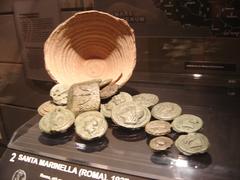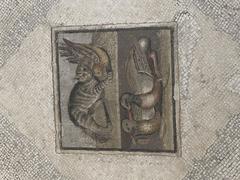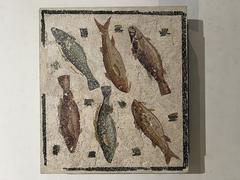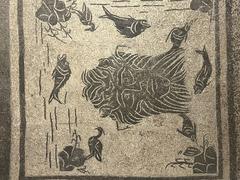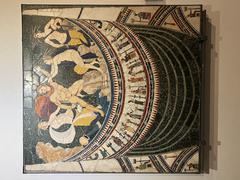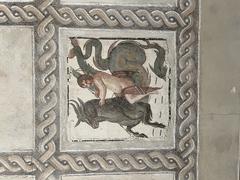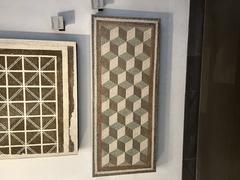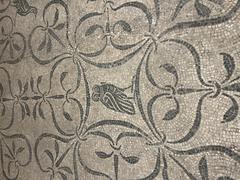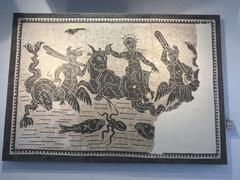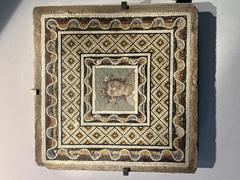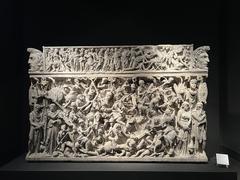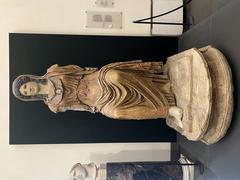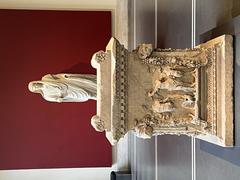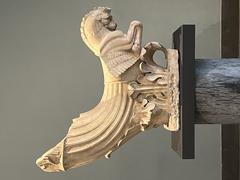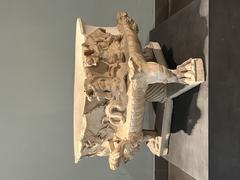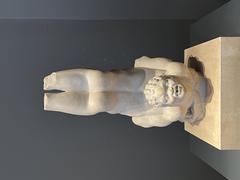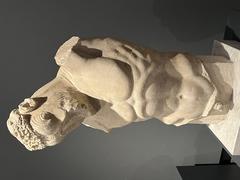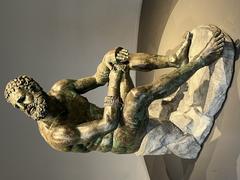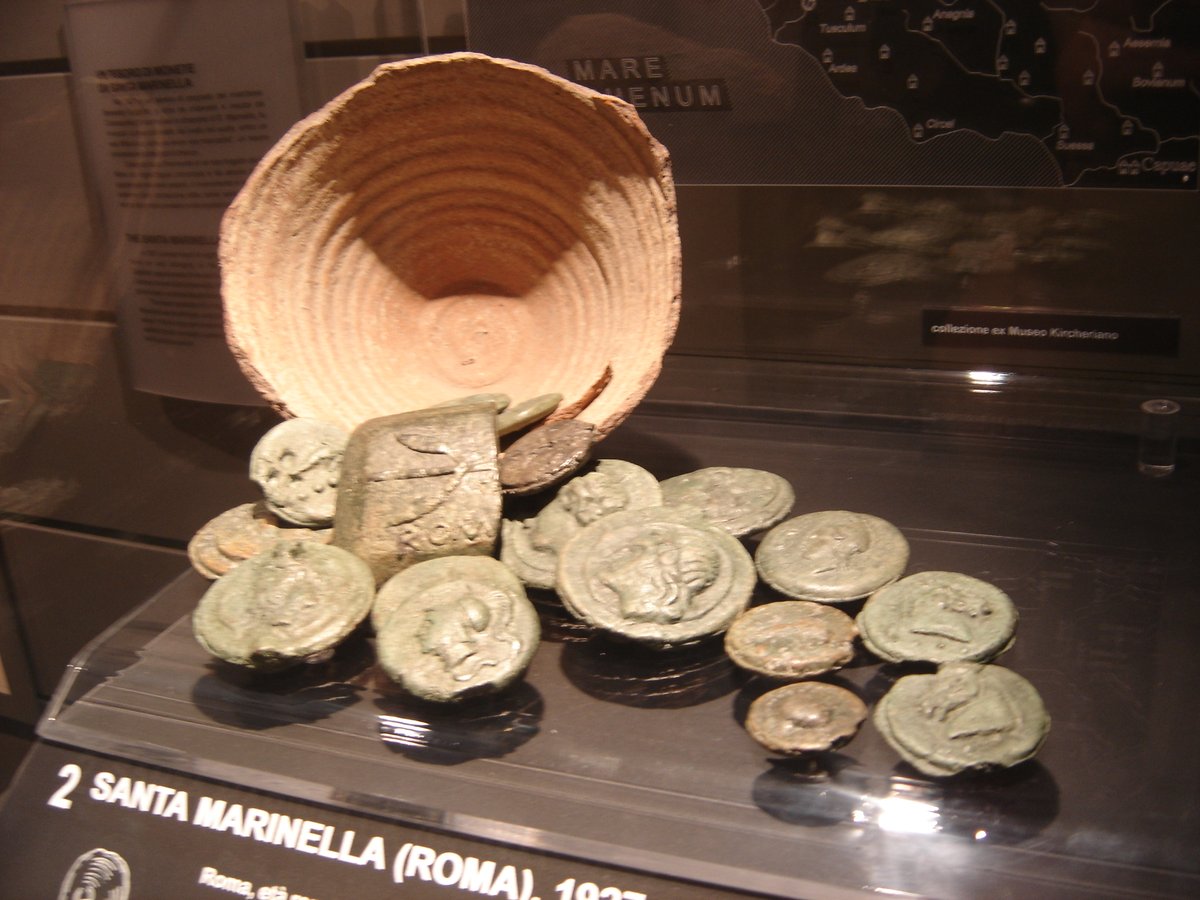
Museum Palazzo Massimo alle Terme: Visiting Hours, Tickets, and Rome Historical Sites Guide
Date: 15/06/2025
Introduction
Palazzo Massimo alle Terme stands as a crown jewel among Rome’s museums, offering a comprehensive window into the art, daily life, and culture of ancient Rome. Part of the National Roman Museum, this Neo-Renaissance building near Termini Station houses an exceptional array of sculptures, frescoes, mosaics, jewelry, coins, and rare artifacts. From the famed “Boxer at Rest” bronze to the immersive frescoes of the Villa of Livia, Palazzo Massimo’s collections bring to life the sophistication and diversity of Roman civilization.
This guide details everything you need to know for your visit: opening hours, ticketing, accessibility, must-see highlights, practical travel tips, and nearby attractions. Whether you are a history buff, art lover, or simply looking to enrich your Roman adventure, Palazzo Massimo alle Terme is not to be missed. For the latest updates and planning resources, consult the official Museo Nazionale Romano, Afar, and ReidsItaly.
Table of Contents
- History and Architectural Significance
- Collections and Artistic Highlights
- Visiting Hours and Ticket Information
- Museum Layout and Navigation
- Practical Tips and Accessibility
- Nearby Attractions
- Frequently Asked Questions (FAQ)
- Summary and Call to Action
- References
History and Architectural Significance
Origins and Evolution
Palazzo Massimo stands on land once belonging to the Renaissance Villa Montalto-Peretti, later transformed (1883–1887) into a Jesuit college by architect Camillo Pistrucci. The building’s Neo-Renaissance façade—with its symmetrical lines, rusticated stonework, and arched windows—reflects the 19th-century revival of classical forms. After nearly a century as a college, it was acquired by the Italian state in 1981 and restored under Costantino Dardi’s supervision, opening as a museum in the 1990s.
Adaptive Reuse
The transformation from college to museum prioritized accessibility, climate control, and optimal conditions for artifact conservation, making it fully accessible for visitors with disabilities. The building’s layout—four floors around a central courtyard—was preserved and adapted to house galleries, a library, conference rooms, and specialized exhibition spaces.
Location
Palazzo Massimo is ideally situated at Largo di Villa Peretti, near Termini Station and the Baths of Diocletian, placing it at the crossroads of Rome’s historical and modern quarters. Its central location makes it easy to combine a museum visit with nearby sites like the Basilica di Santa Maria degli Angeli e dei Martiri and Piazza della Repubblica.
Collections and Artistic Highlights
Sculpture Masterpieces
- Boxer at Rest (Pugilist): A Hellenistic bronze sculpture renowned for its realism and emotional depth, depicting a weary, battered athlete (Afar).
- Hellenistic Prince and Discobolus Lancellotti: Roman masterpieces reflecting the influence of Greek art.
- Imperial Portraiture: Lifelike busts of Julius Caesar, Augustus, Hadrian, and other luminaries, exemplifying Roman sculptural realism (ReidsItaly).
- Mythological and Funerary Sculptures: Including a bronze Dionysus and intricately carved sarcophagi depicting battles and mythological scenes.
Frescoes and Mosaics
- Garden Room of Livia: 1st-century BCE frescoes from the villa of Livia Drusilla, wife of Augustus, recreating an enchanting illusionistic garden (Afar).
- Villa Farnesina Frescoes: Late Republican wall paintings with mythological and decorative themes (ReidsItaly).
- Four Charioteers Mosaic: A vibrant depiction of Circus Maximus racing teams.
- Opus Sectile Panels: Marble inlay from the Basilica of Giunio Bassa, showcasing late Roman decorative arts.
Decorative Arts and Everyday Life
- Jewelry and Domestic Items: Gold hairnets, rings, ivory dolls, and other personal objects, offering insight into Roman daily life (ReidsItaly).
- Grottarossa Mummy: The only known Roman mummy discovered in Rome, accompanied by her grave goods.
Numismatic Collection
- Vault of Coins: One of Italy’s largest coin collections, tracing monetary history from the Republic through the modern era, with interactive displays (ReidsItaly).
Visiting Hours and Ticket Information
Opening Hours
- Tuesday to Sunday: 9:00 AM – 7:45 PM (last entry at 7:00 PM)
- Closed Mondays and on January 1st, May 1st, and December 25th.
- Always confirm on the official website for special closures or changes.
Ticket Prices
- Standard ticket: €12
- Reduced ticket: €7 (EU citizens aged 18–25)
- Free entry: Under 18s, EU museum professionals, certain other categories
- Combined ticket: €18 (grants access to all four branches of the National Roman Museum within a seven-day period)
- Tickets can be purchased online (Museo Nazionale Romano) or at the entrance; advance booking is highly recommended during peak seasons.
Museum Layout and Navigation
- Ground Floor: Classical sculptures, portraiture, and imperial busts
- First Floor: Mythological statues, sarcophagi, and bronze works
- Second Floor: Frescoes and mosaics from villas and public spaces, including immersive reconstructions of the Villa of Livia and Villa Farnesina (Kent Blog)
- Basement: Jewelry, glassware, the Grottarossa mummy, and the numismatic collection
All floors are accessible via elevators and ramps, with bilingual signage and informative placards throughout.
Practical Tips and Accessibility
- Time Required: Allocate at least 2–3 hours for a thorough visit.
- Photography: Permitted without flash; tripods and selfie sticks are not allowed.
- Guided Tours: Audio guides are usually available in multiple languages; guided tours can be arranged through external partners or on request.
- Facilities: Restrooms, cloakroom, and a bookshop are available; there is no café, but many options are nearby.
- Family Friendliness: While not interactive, reconstructed villa rooms and the mummy are popular with children.
- Accessibility: Fully accessible for wheelchair users, with accessible restrooms and step-free routes on each floor.
Nearby Attractions
- Baths of Diocletian: Ancient Roman bath complex, located across the street.
- Basilica di Santa Maria degli Angeli e dei Martiri: A Michelangelo-designed church built within the ruins of the Baths of Diocletian.
- Piazza della Repubblica: Iconic Roman square just a short walk away.
- Monti Neighborhood: A lively area with restaurants, shops, and boutique hotels.
Frequently Asked Questions (FAQ)
Q: What are the visiting hours for Palazzo Massimo alle Terme?
A: Tuesday to Sunday, 9:00 AM – 7:45 PM (last entry at 7:00 PM); closed Mondays and select holidays.
Q: Can I buy tickets online?
A: Yes, purchase tickets in advance through the official website.
Q: Is the museum accessible for people with disabilities?
A: Yes, all floors are accessible with elevators and ramps.
Q: Is photography allowed?
A: Non-flash photography is permitted; tripods and selfie sticks are not.
Q: What is included in the combined ticket?
A: Access to Palazzo Massimo, Palazzo Altemps, Baths of Diocletian, and (when open) Crypta Balbi within a seven-day period.
Q: Are guided tours available?
A: Audio guides and guided tours are available; check at the ticket desk or online for schedules.
Summary and Call to Action
Palazzo Massimo alle Terme offers a uniquely immersive journey through Rome’s ancient world, with collections that span sculpture, painting, daily life, and monetary history. Its accessible location, clear layout, and combined ticket options make it an ideal destination for a wide range of visitors. Pair your visit with nearby sites, and enjoy a reflective, uncrowded experience in one of Rome’s most outstanding museums.
For up-to-date information, consult the official museum website. Download the Audiala app for guided tours, event updates, and exclusive tips. Enhance your Rome adventure by following related cultural content and planning ahead for a seamless and memorable museum visit.
References
- Palazzo Massimo alle Terme: A Comprehensive Guide to Visiting Rome’s Premier Historical Site, 2025, Afar (https://www.afar.com/places/palazzo-massimo-alle-terme-rome)
- Palazzo Massimo alle Terme: Visiting Hours, Tickets, and Highlights of Rome’s Premier Historical Site, 2025, ReidsItaly (http://www.reidsitaly.com/destinations/lazio/rome/sights/mnr_palazzo_massimo.html)
- Palazzo Massimo alle Terme Visiting Hours, Tickets & Guide to Rome Historical Sites, 2025, Museo Nazionale Romano (https://museonazionaleromano.beniculturali.it/orari-e-biglietti/)
- Palazzo Massimo Visiting Hours, Tickets, and Cultural Highlights in Rome, 2025, Museo Nazionale Romano (https://archeoroma.beniculturali.it/en/museums/palazzo-massimo-alle-terme)
- Kent Blog, 2018, University of Kent (https://blogs.kent.ac.uk/lucius-romans/2018/06/13/799/)
